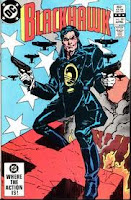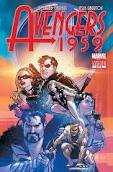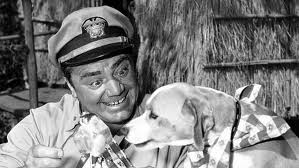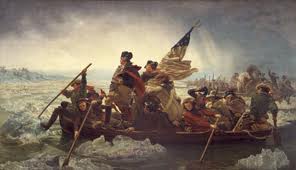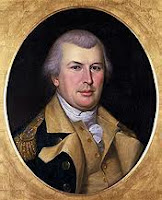Note: I recently found the draft of this article, as faxed (remember that?) to the Financial Times, attached to a clipping of the piece as it appeared, in somewhat different form and with a different title, in January 2001 in the FT's Saturday arts section. It was a rewrite of a piece I'd originally written after the London Film Festival in October 2000, expanded to take into account the re-release of Salo and the various books mentioned. Although looking at it now it seems to suffer from a bit of Millennial Overload, it still seems relevant, especially because in the past decade I don't see any big changes, either in interpretations of Sade or in the world that interprets him. On the other hand, I will confess to a certain Marquis OD a decade ago, and re-reading this essay hasn't changed that!
 THE UNBEARABLE SADE-NESS OF BEING
THE UNBEARABLE SADE-NESS OF BEING
The idea of the Marquis de Sade as a spiritual poster-boy for the fin of our siecle may take some beating, but here we are in Stanley Kubrick's 2001 and after two centuries of demonisation as a pornographer, and after reinventions as both revolutionary and counter-revolutionary, we are suddenly confronted with yet another deconstruction of Citizen Sade. This time it's as Celebrity Sade, a posh bad boy born to epater, a sort of Jacobin cross between Damien Hirst and Will Self.
 THE UNBEARABLE SADE-NESS OF BEING
THE UNBEARABLE SADE-NESS OF BEINGThe idea of the Marquis de Sade as a spiritual poster-boy for the fin of our siecle may take some beating, but here we are in Stanley Kubrick's 2001 and after two centuries of demonisation as a pornographer, and after reinventions as both revolutionary and counter-revolutionary, we are suddenly confronted with yet another deconstruction of Citizen Sade. This time it's as Celebrity Sade, a posh bad boy born to epater, a sort of Jacobin cross between Damien Hirst and Will Self.
Sade
has been reimagined more times than Frankenstein's monster, but
presenting his life as a Hammer horror film is one of the more
striking features of Quills, the
film by Philip Kaufman (The Right Stuff, Invasion Of The
Body Snatchers, The Unbearable Lightness Of Being) starring
Geoffrey Rush as the Marquis, which received its world premiere at
the London Film Festival in October 2000, and which opened in London
in January 2001. Set during Sade's famous stay at the asylum of
Charenton, it climaxes with a burning castle scene whose parallels
with Frankenstein's
mindless peasants destroying that which they cannot understand is
hardly lost for subtlety.
At
the same time, Sade the monster is also presented as Sade the artist,
persecuted for his avant-garde vision in Sade, by
the French director Benoit Jacquet, which also premiered at the LFF
last autumn. In Jacquet's film, Sade, played by Daniel Auteuil, is
shocked to discover his philosophy of excess translates badly into
the political arena. Of course this was a point rammed home, so to
speak, a full quarter-century ago by Piers Paolo Pasolini in his
Salo: 120 Days Of Sodom, which
fortuitously enough was also re-released in January 2001.

Yet
positioned between the traditional poles of literary pioneer and
misguided sexual madman, something about Sade obviously resonates
within our own obsessions with media-hyped art and spin-doctored
politics. 'He's
such a useful millennial figure,' says Doug Wright, who adapted the
screenplay of Quills
from his own play. 'His extremes provide a way of examining culture
in a time of chaos, millennial chaos. It's no coincidence there were
five new biographies of Sade published in the 1990s, and each
presented a radically different portrait.'
Wright's
Sade suffers persecution at the hands of philistines. Indeed, our
first view inside Charenton reveals that Sade's fellow inmates are
busy inventing both abstract art and atonal music, more than a century
ahead of schedule. When Wright wrote his play, which won a 1995 Obie
Award for off-Broadway success, he was originally addressing funding
controversies within America's National Endowment for the Arts. 'I
wrote it to join the debate over artistic freedom,' he says. 'The NEA
issue faded but last year (New York) Mayor Giuliani's attempts to ban
the Saachi collection from the Brooklyn Museum kept it timely'.
Also
timely were the persecutions of America's own Presidential libertine,
which convinced Michael Caine to take the role of Sade's inquisitor
and tormentor. 'Kenneth Starr's pursuit of Bill Clinton gave us a
little more relevance,' says producer Peter Kaufman. 'Michael was
sold after he watched Starr facing the press with his inappropriate
little sadistic smile. “'I hate Starr—I'll do it!'”, he said.
Thus the French Marquis becomes a metaphor for American politics
being reduced to sexual burlesque.
 Sade
proceeds down a similar path but
in a more philosophical French way. Set in 1794, during the Reign Of
Terror, it has Sade imprisoned at the wonderfully named (for
English-speaking audiences) Convent Pricpus, which eventually becomes
the site of mass graves for victims of the guillotine. The film opens
with Auteuil shrinking away from the sight of the guillotine in
action, disillusioned to the point of despair by the excesses of
Robespierre, who's played as a somewhat harsher version of Foucalt,
bending the world to his own political post-modernism. Saved from the
chop himself only by his mistress's whoring herself to Robespierre's
assistant, Sade's libertine reputation assumes the mien of an
existential response to hopeless absurdity. Unlike theatre of the
absurd, however, in this case the absurdity is political.
Sade
proceeds down a similar path but
in a more philosophical French way. Set in 1794, during the Reign Of
Terror, it has Sade imprisoned at the wonderfully named (for
English-speaking audiences) Convent Pricpus, which eventually becomes
the site of mass graves for victims of the guillotine. The film opens
with Auteuil shrinking away from the sight of the guillotine in
action, disillusioned to the point of despair by the excesses of
Robespierre, who's played as a somewhat harsher version of Foucalt,
bending the world to his own political post-modernism. Saved from the
chop himself only by his mistress's whoring herself to Robespierre's
assistant, Sade's libertine reputation assumes the mien of an
existential response to hopeless absurdity. Unlike theatre of the
absurd, however, in this case the absurdity is political.
Interestingly,
in neither Quills nor
Sade does the Marquis
get up to much in the way of the high-jinks for which he is
celebrated, apart from Auteuil receiving a few lashes from the
gardener. Auteuil's Sade resists nobly the advances of an
aristocratic adolescent who wishes to be deflowered before she faces
the guillotine; Sade grants her wish but arranges for the busy
gardener to act in his stead. Quills seems
to hold feminine sexuality in even less regard than Sade did; the
film opens with a guillotine scene similar to Sade's, but
here presents a woman's seeming pleasure as pain only when the blade
actually descends. Meanwhile, Rush's Sade seduces only through his
words, and, in contrast to Caine, is remarkably non-sadistic. It's as if he wants to be able to tesitfy to the Directorate: 'I did not have sex with that woman, Mlle. X'!
 It's
hard to see the last generation's Sade so neutered. In Peter Weiss'
play Marat/Sade (filmed
by Peter Brook in 1966) Sade the revolutionary threw his revolution
back into the faces of the aristocracy who came to see his plays
performed by his fellow inmates at Charenton. For Pasolini, Sade was
the original blackshirt, drawing the parallel between class
domination and individual domination in both sadism and fascism.
It's
hard to see the last generation's Sade so neutered. In Peter Weiss'
play Marat/Sade (filmed
by Peter Brook in 1966) Sade the revolutionary threw his revolution
back into the faces of the aristocracy who came to see his plays
performed by his fellow inmates at Charenton. For Pasolini, Sade was
the original blackshirt, drawing the parallel between class
domination and individual domination in both sadism and fascism.
As
Doug Wright noted, the rebirth of our new Marquis has been underway
throughout the past decade. Donald Thomas, in his 1997 biography, saw
Sade as a revolutionary of sorts, torn between aristocratic boredom
and lechery, as if he were breaking down the barriers of society
merely to more freely abuse the lower classes in his quest for libertine
fraternity, if not equality. More tellingly, Francine du Plessix Gray
in At Home With The Marquis de Sade (1999) drew
on Sade's letters to show his being shaped uniquely, and controlled
throughout his life, by women, transforming him into an early sort of
whipping boy for feminism. For Gray, Sade's writings were responses
to the constraints imposed by his wife, his mother, indeed, by
society itself—in the classic metaphor of women standing for
societal bounds. This is reflected in Sade's prison letters,
collected and translated in 2000 by Richard Seaver. There one senses
little more than a naughty boy being alternatively spoiled and
punished by protective mother figures. For Gray, this translates into
Sade stepping forward as a sort of prophet of life-style as
politics.
Which
makes the 'Carry On Marquis' humour of Rush's performance in Quills
all the more apt. In a scene Philip Kaufman asked Wright to add to
the film, DeSade welcomes his tormentor to Charenton with a play
poking fun at the man and his young bride, whom Caine has literally
purchased from the nuns who raised her. While it echoes the
play-within-a-play confrontations of Marat/Sade, this
is a personal confrontation: if not Kenneth Starr, Sade has become
Jerry Springer: Next On Marquis!: Church Sells Child Brides To Powerful
Men!
'Carry On Marquis' humour of Rush's performance in Quills
all the more apt. In a scene Philip Kaufman asked Wright to add to
the film, DeSade welcomes his tormentor to Charenton with a play
poking fun at the man and his young bride, whom Caine has literally
purchased from the nuns who raised her. While it echoes the
play-within-a-play confrontations of Marat/Sade, this
is a personal confrontation: if not Kenneth Starr, Sade has become
Jerry Springer: Next On Marquis!: Church Sells Child Brides To Powerful
Men!
 'Carry On Marquis' humour of Rush's performance in Quills
all the more apt. In a scene Philip Kaufman asked Wright to add to
the film, DeSade welcomes his tormentor to Charenton with a play
poking fun at the man and his young bride, whom Caine has literally
purchased from the nuns who raised her. While it echoes the
play-within-a-play confrontations of Marat/Sade, this
is a personal confrontation: if not Kenneth Starr, Sade has become
Jerry Springer: Next On Marquis!: Church Sells Child Brides To Powerful
Men!
'Carry On Marquis' humour of Rush's performance in Quills
all the more apt. In a scene Philip Kaufman asked Wright to add to
the film, DeSade welcomes his tormentor to Charenton with a play
poking fun at the man and his young bride, whom Caine has literally
purchased from the nuns who raised her. While it echoes the
play-within-a-play confrontations of Marat/Sade, this
is a personal confrontation: if not Kenneth Starr, Sade has become
Jerry Springer: Next On Marquis!: Church Sells Child Brides To Powerful
Men!
Wright
points out that the plays Sade wrote at Charenton were actually
'toothless romantic comedies...he always hoped for mainstream
acceptance as a popular playwright.' And he might well have finally
achieved that goal. Sade reborn as popular mainstream entertainer? In
a sexually obsessed society that sees Anne Robinson or Chris Tarrant
as personifications of sadism, we may well get exactly the Marquis De
Sade we deserve.


